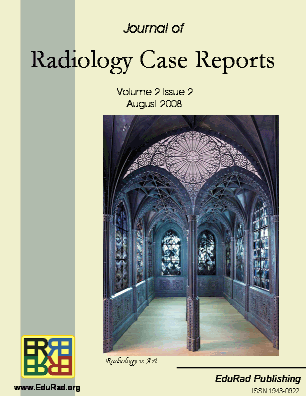Pulmonary Embolism following Endovenous Laser Ablation (EVLA) of the Great Saphenous Vein
DOI:
https://doi.org/10.3941/jrcr.v2i2.25Keywords:
EVLA, PE, Pulmonary embolism, varicose veins, DVTAbstract
A 70yr old lady presented to accident and emergency with sudden onset pleuritic chest pain. A pulmonary embolus (PE) was diagnosed by CTPA. Ten days earlier she had bilateral EVLA for recurrent long saphenous vein disease. Confounding risk factors for pulmonary embolism included bilateral ligation and stripping of the long saphenous vein a year earlier, malignancy, EVLA and phlebitic tributary varices. EVLA has been shown to be an effective treatment for superficial venous insufficiency with low morbidity and high patient satisfaction. The investigation of confounding risk factors and possible causes should not compromise the initial treatment of PE.
Downloads
Published
Issue
Section
License
The publisher holds the copyright to the published articles and contents. However, the articles in this journal are open-access articles distributed under the terms of the Creative Commons Attribution-NonCommercial-NoDerivs 4.0 License, which permits reproduction and distribution, provided the original work is properly cited. The publisher and author have the right to use the text, images and other multimedia contents from the submitted work for further usage in affiliated programs. Commercial use and derivative works are not permitted, unless explicitly allowed by the publisher.






